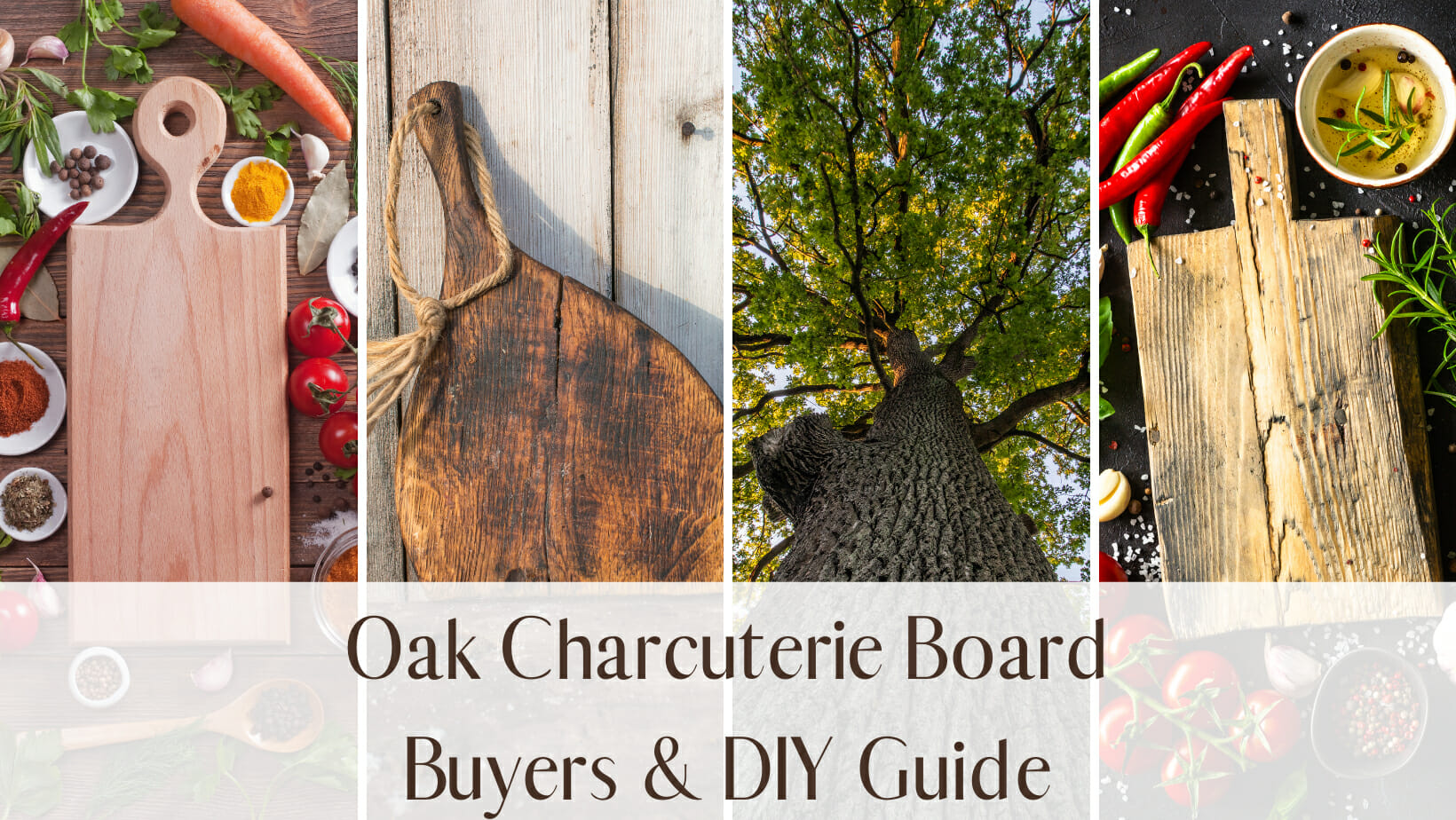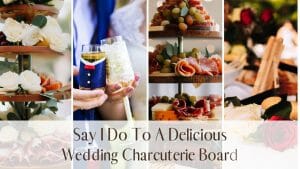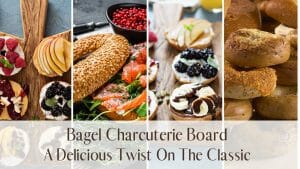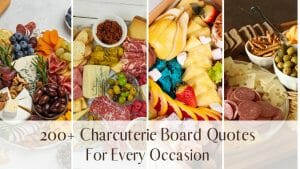Elevate your next gathering with the ultimate centerpiece: an oak charcuterie board! Perfect for charcuterie and grazing enthusiasts, these stunning and durable boards add a touch of elegance to your grazing spread.
From local artisans to reputable online shops, we'll guide you through the best spots to buy the best boards. Plus, for the DIY enthusiasts, we'll share some tips and tricks on how to create a personalized board that reflects your unique style.
Fast-track your charcuterie skills and connect with 514K experts. Click for instant access to our comprehensive guide and community >>
Table of Contents [CLICK HERE TO OPEN]
- The Benefits of Using Oak for Charcuterie Boards
- White Oak Vs Red Oak Charcuterie Boards
- How to Choose the Perfect Oak Charcuterie Board
- Caring for Your Oak Charcuterie Board
- DIY Oak Charcuterie Board: A Step-by-Step Guide
- Personalizing Your Oak Charcuterie Board
- Gifting Personalized Oak Charcuterie Boards
- Wrapping It All Up
- People Also Asked
The Benefits of Using Oak for Charcuterie Boards

One of the many reasons the oak charcuterie board has become a favorite among food enthusiasts is its unique combination of durability and aesthetic appeal*. In this section, we'll delve into the advantages over other woods and provide a comparison between the two popular types: white oak and red oak.
Oak is known for its incredible strength and resistance to wear, making it a perfect choice for charcuterie boards that need to withstand the test of time. Additionally, the dense nature of oak is less likely to absorb odors and flavors from the food, ensuring that your board remains fresh and ready for your next grazing adventure.
Aesthetically, oak brings warmth and character to your table with its beautiful grain patterns and rich color variations. The natural elegance adds a touch of sophistication to any gathering, making it a stunning focal point for your display.
White Oak Vs Red Oak Charcuterie Boards
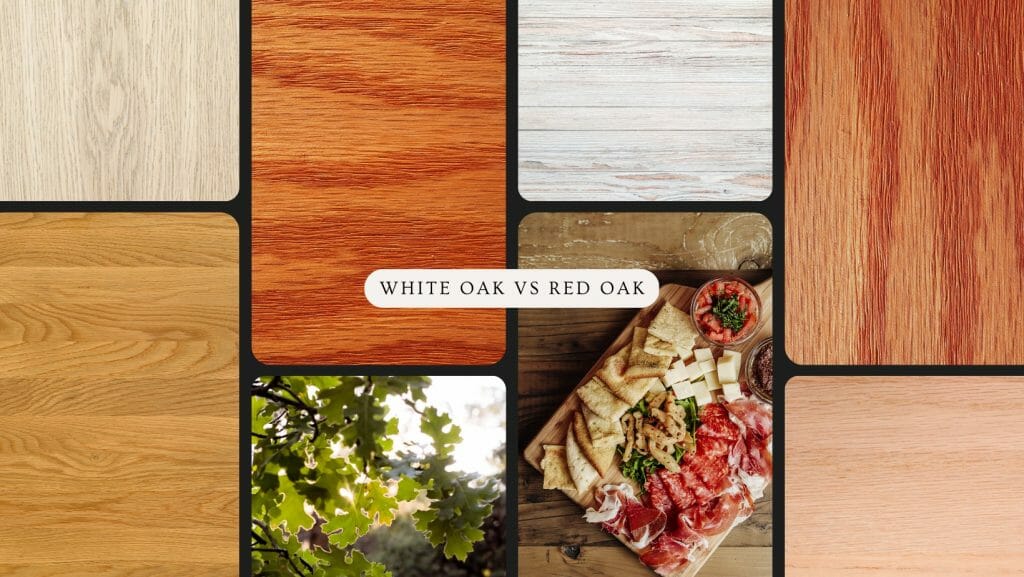
Now, let's compare white oak and red oak charcuterie boards. White oak is often regarded as a superior choice for cutting boards due to its closed-pore structure, which makes it less porous and more resistant to moisture. This characteristic helps reduce the chances of bacterial growth, ensuring a safer and more hygienic surface for your delicious treats.
On the other hand, red oak charcuterie boards also have their charm. While they may be slightly more porous than white oak, red oak boards often display a more vibrant and eye-catching grain pattern. This feature can add visual interest to your food presentation, creating a memorable experience for your guests.
At the end of the day, both white oak and red oak charcuterie boards offer unique advantages that cater to different preferences. Whether you prioritize the moisture resistance of white oak or the striking grain patterns of red oak, an oak charcuterie board will surely be a delightful addition to your entertaining arsenal.
How to Choose the Perfect Oak Charcuterie Board
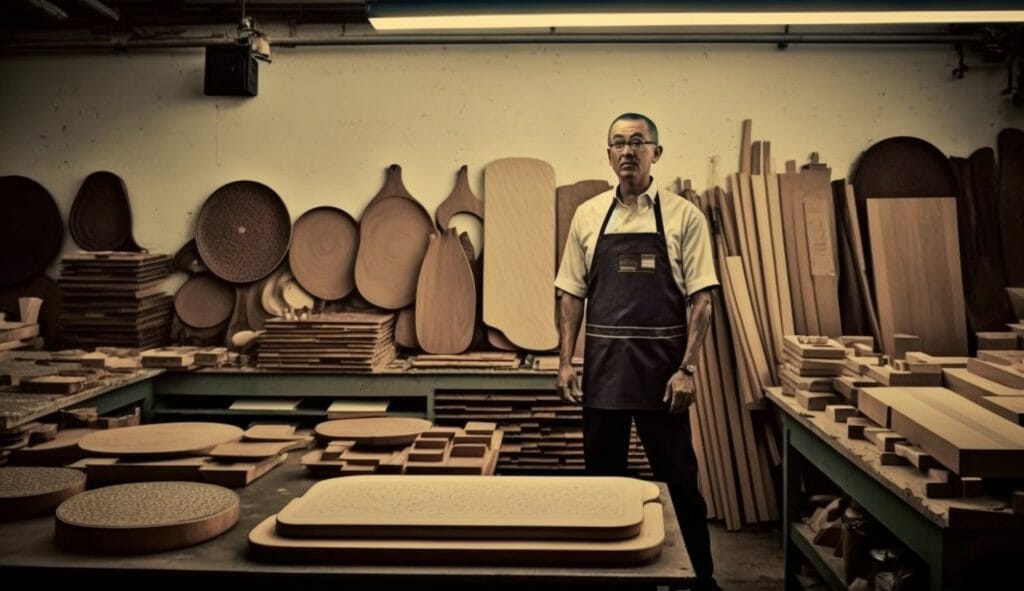
Selecting the ideal oak charcuterie board for your needs involves several factors, such as size, shape, wood grain, and where to buy one. In this section, we'll guide you through these considerations, helping you find the perfect board to elevate your entertaining game.
First and foremost, consider the size and shape that will best suite your needs. For intimate gatherings, a smaller board may suffice, while larger boards cater to big parties and events. Additionally, think about the shape you prefer, whether it's a classic rectangular design or a more unique, organic shape that adds visual intrigue to your spread.
Pay attention to the wood grain. As mentioned in the previous section, white oak and red oak offer distinct grain patterns and colors. While white oak tends to have a subtler appearance, red oak often displays more pronounced and eye-catching patterns. Consider your personal taste and the aesthetic.
When it comes to purchasing a premade oak charcuterie board, there are numerous popular brands and sources to choose from. You may find beautiful, handcrafted options at local artisan markets, woodworking shops, or even boutique kitchen stores. These local resources often provide high-quality, unique styles that can be a great addition to your collection.
For those who prefer online shopping, reputable resources include major retailers like Amazon, Williams-Sonoma, and Crate & Barrel. Additionally, don't overlook smaller online boutiques and Etsy shops, where talented artisans showcase their hand
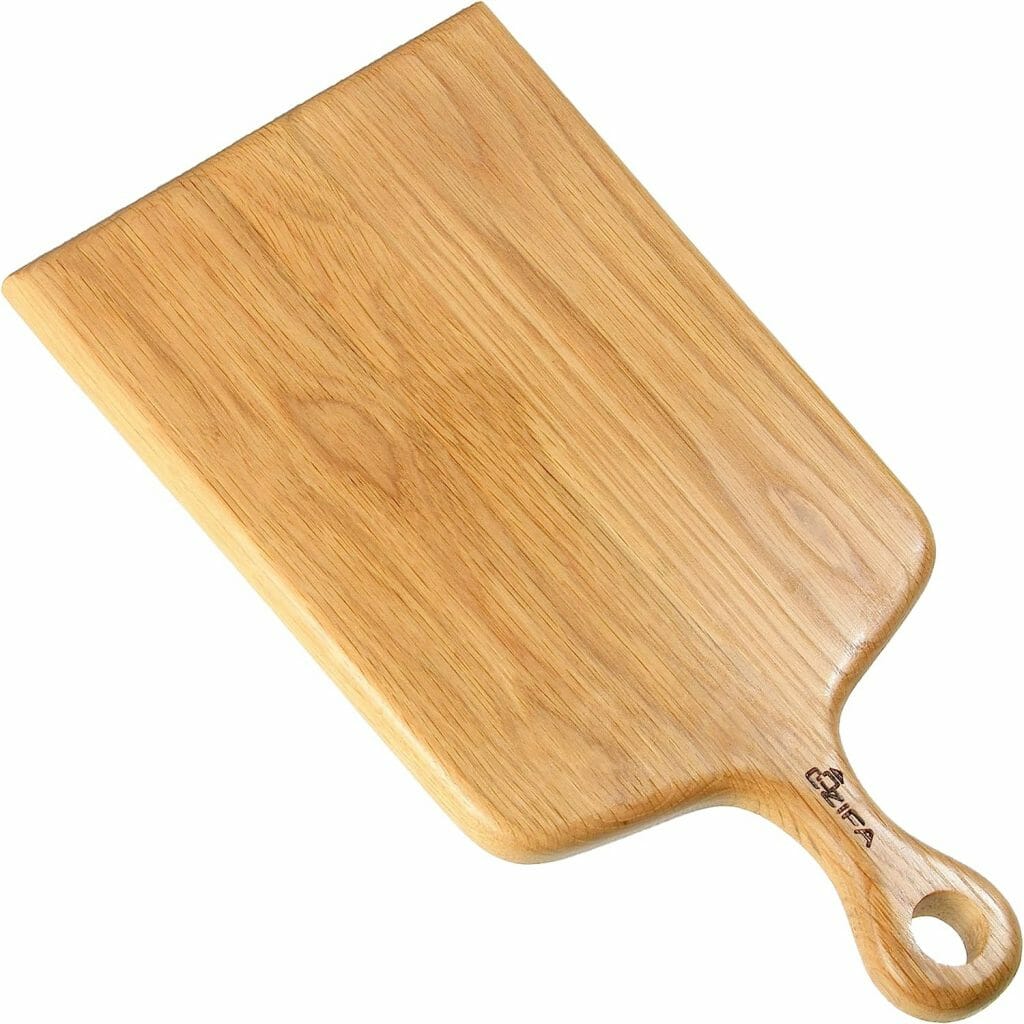
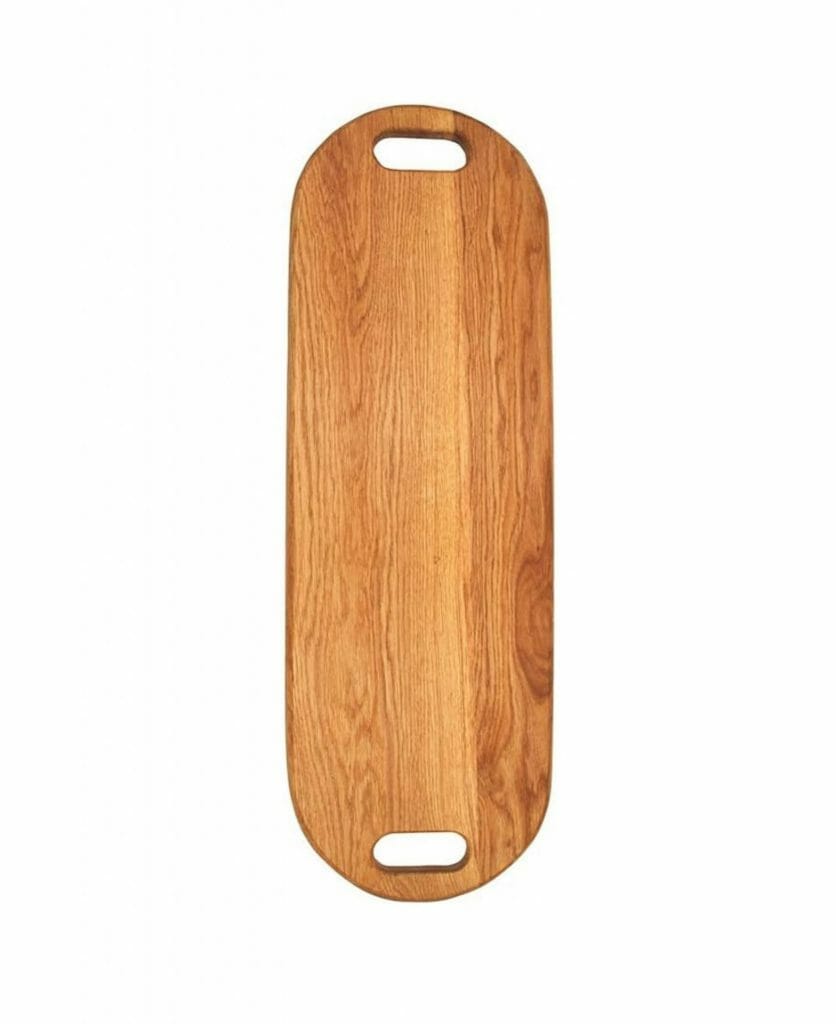
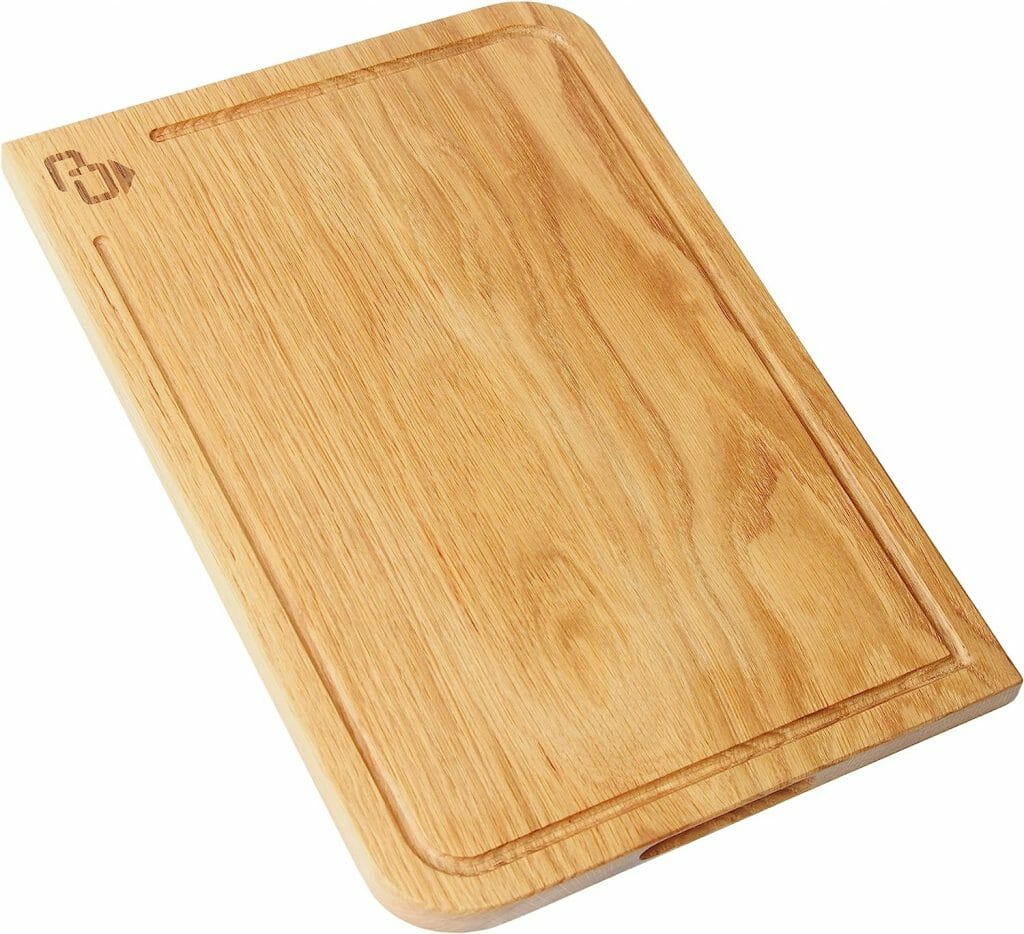
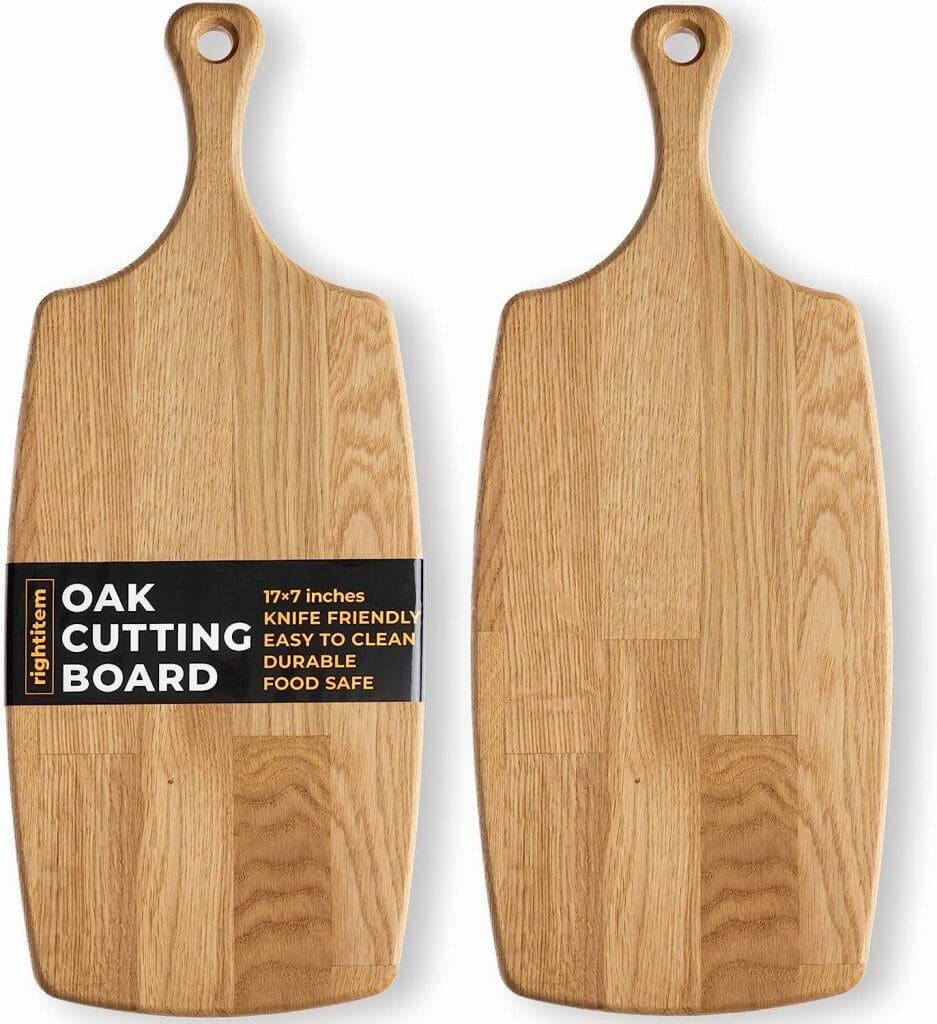
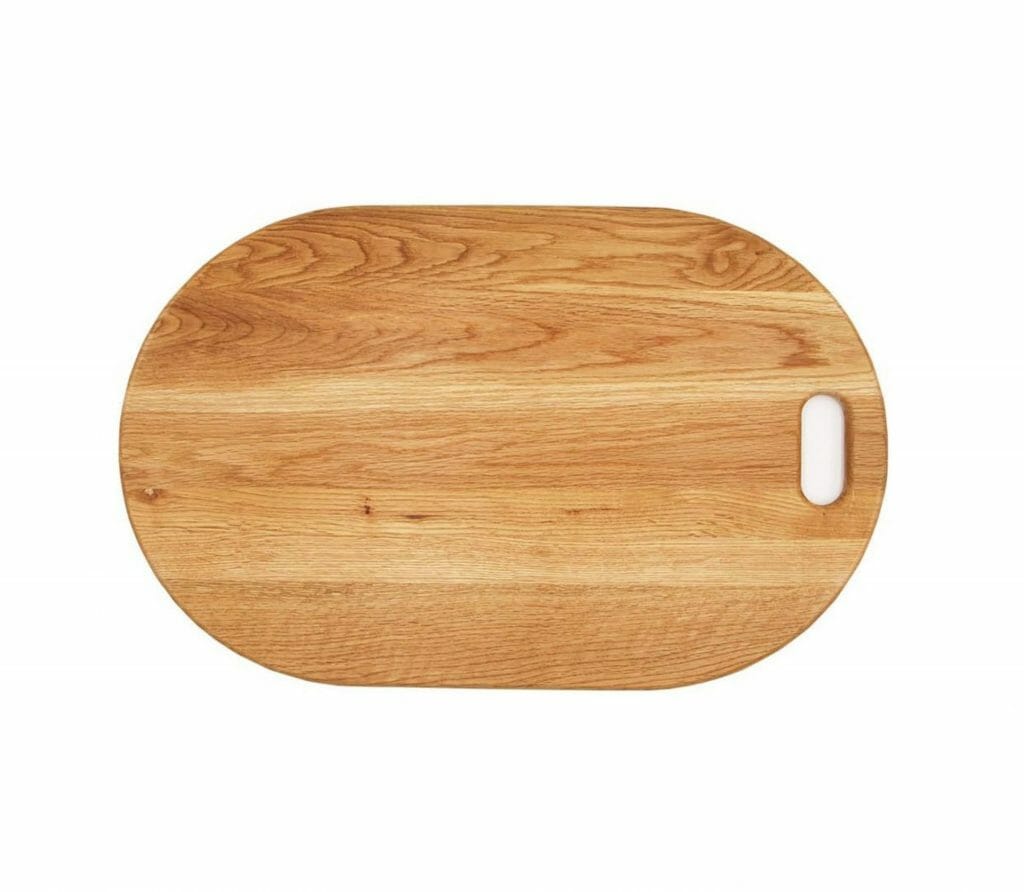
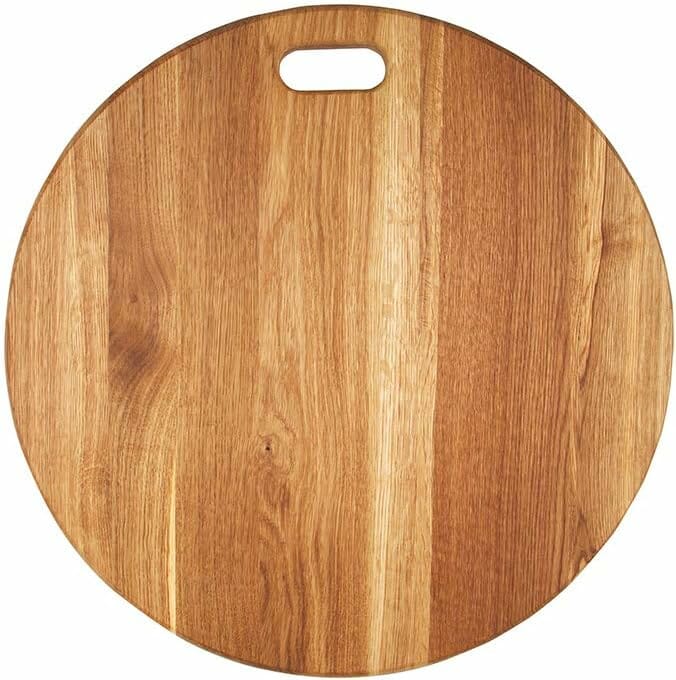
Caring for Your Oak Charcuterie Board
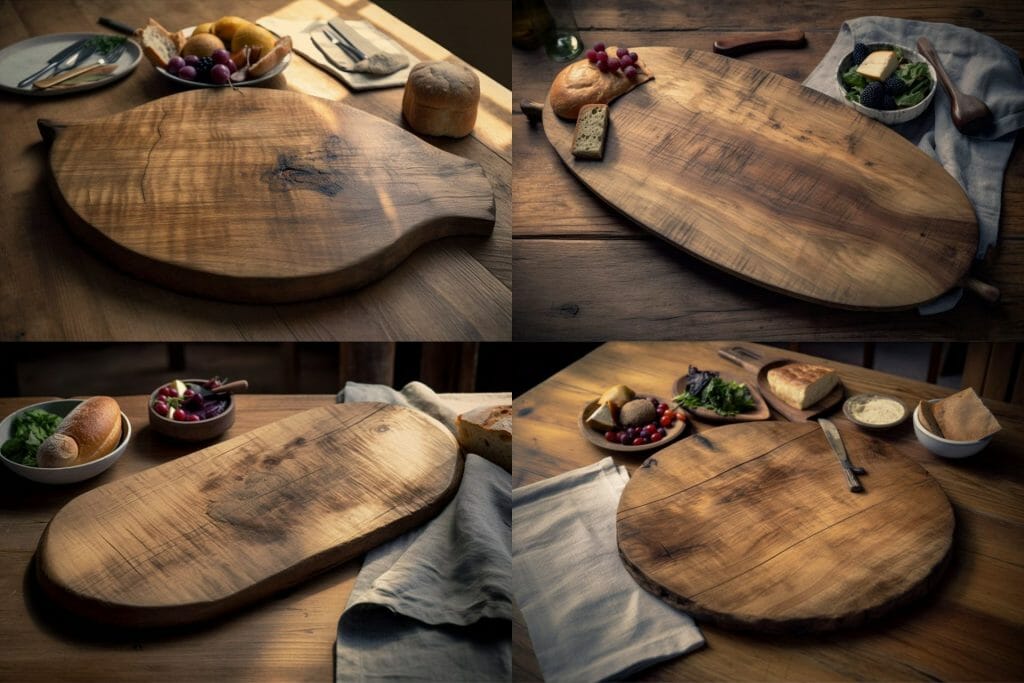
Proper care and maintenance are essential to ensure the longevity of your oak charcuterie board. In this section, we'll provide valuable tips on cleaning, oiling, and storing your board to keep it looking and performing its best for years to come.
Cleaning
Cleaning your oak charcuterie board is a crucial first step in maintaining its beauty and function. After each use, gently scrub the board with warm, soapy water and a soft cloth or sponge to remove any food particles. Avoid soaking your board in water or using harsh detergents, as this can cause the wood to warp or crack. Once clean, rinse the board thoroughly and pat it dry with a towel before allowing it to air dry completely.
Oiling
Oiling your oak charcuterie board is an essential step in preserving the wood and preventing it from drying out. Food-grade mineral oil or a specialized cutting board oil are both excellent choices for this task. To oil your board, apply a thin layer of oil to its surface using a soft cloth or paper towel.
Ensure you cover the entire board, including the sides and edges, and allow the oil to absorb into the wood for several hours or overnight. Wipe away any excess oil with a clean cloth before using the board again. Aim to oil your charcuterie board once a month or more frequently if it begins to look dry.
Storage
When it comes to storage, keep your oak charcuterie board in a cool, dry place away from direct sunlight or heat sources. Storing the board flat can help prevent warping, but if space is limited, you can also store it upright as long as it is adequately supported. To prevent any lingering odors or cross-contamination, avoid stacking other items on top of your charcuterie board.
By following these simple care tips, you'll ensure that your oak charcuterie board remains an attractive
DIY Oak Charcuterie Board: A Step-by-Step Guide
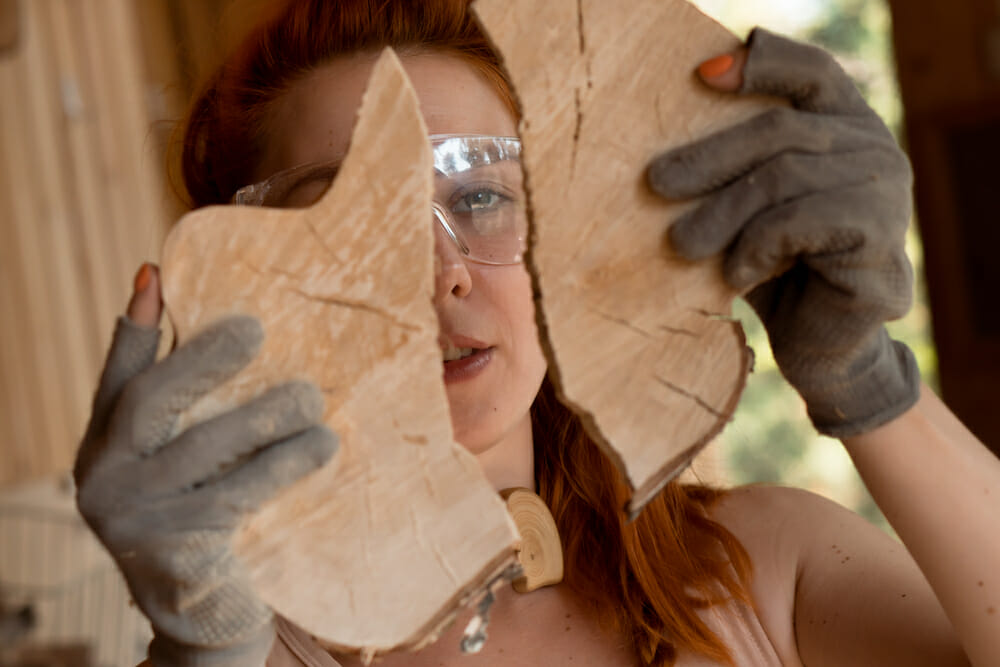
If you're feeling crafty and want to create your own oak charcuterie board, this step-by-step guide is for you! By making your board, you'll have the satisfaction of serving your delicious spreads on a beautiful, handmade piece. Let's dive into the necessary tools, materials, and steps involved in this rewarding DIY project.
Tools and Materials:
- Oak wood plank (choose your preferred size and thickness)
- Saw (hand saw or circular saw)
- Sandpaper (various grits: 80, 150, and 220)
- Wood glue (if needed for joining pieces)
- Clamps (for securing the wood during gluing)
- Food-grade mineral oil or cutting board oil
- Optional: Router or chisel for creating handles or grooves
Step 1: Select and Prepare the Wood
Choose a high-quality oak wood plank from a local lumberyard or woodworking shop. Ensure the wood is dry, free of knots or cracks, and has an attractive grain pattern. If necessary, join smaller pieces of oak together using wood glue and clamps, allowing the glue to dry completely before proceeding.
Step 2: Cut and Shape the Board
Using your saw, cut the oak plank to your desired size and shape. If you'd like to add handles or grooves to your charcuterie board, use a router or chisel to create these details.
Step 3: Sand and Smooth
Sand the entire surface of your oak charcuterie board, starting with the 80-grit sandpaper to remove any rough spots and imperfections. Progress to the 150-grit sandpaper, and finally the 220-grit sandpaper for a smooth, polished finish. Be sure to sand the edges and corners to create a comfortable grip and to prevent any splinters.
Step 4: Clean and Remove Dust
After sanding, use a damp cloth to wipe away any dust or debris from the board's surface. Allow the wood to dry completely before moving on to the next step.
Step 5: Apply Oil
Once your oak charcuterie board is clean and dry, apply a thin layer of food-grade mineral oil or cutting board oil to the entire surface, including the sides and edges, using a soft cloth or paper towel. This oiling process will protect the wood and enhance its natural beauty. Allow the oil to soak into the wood for several hours or overnight, then wipe away any excess oil with a clean cloth.
Step 6: Enjoy Your Handmade Oak Charcuterie Board
Now that you've completed your board, it's time to put it to use! Arrange your favorite cheeses, meats, fruits, and other delicious treats on your beautiful, handmade board and impress your guests with your woodworking skills.
By following this step-by-step guide, you'll not only have a unique and functional oak charcuterie board but also the satisfaction of having created it yourself. Remember to maintain your board with regular cleaning and oiling, as discussed earlier in the article, to ensure its longevity and continued appeal. Happy crafting and bon appétit!
Personalizing Your Oak Charcuterie Board
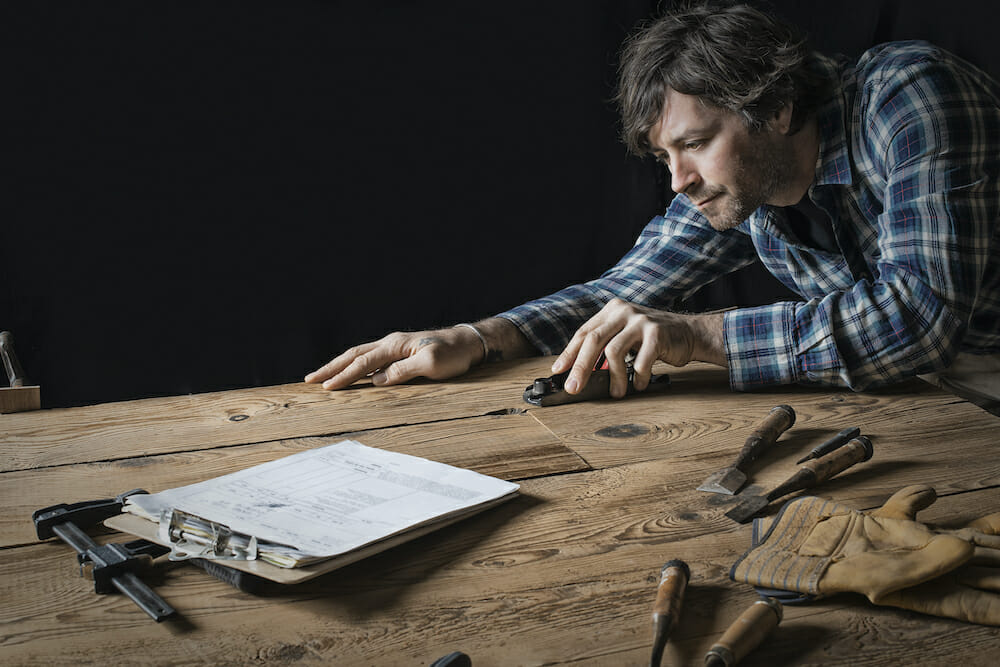
One of the most appealing aspects of owning an oak charcuterie board is the opportunity to make it uniquely yours. By customizing your board, you can add a touch of your personality to your gatherings or create a memorable gift for a loved one. Here are some ideas for personalizing your oak charcuterie board:
Engraving: Add a touch of elegance to your board by having it professionally engraved with your initials, a family name, or a meaningful quote. Many woodworkers and artisans offer engraving services, making it easy to find the perfect design that suits your style.
Wood Burning: For a more rustic and handmade look, consider using a wood-burning tool to etch your desired design onto your oak charcuterie board. This technique requires a steady hand and some practice, but the end result is a charming, one-of-a-kind piece that's sure to impress your guests.
Painting: If you're artistically inclined, why not add some color to your oak charcuterie board? Acrylic paints work well on wood surfaces and can be sealed with a food-safe varnish for added protection. Create intricate patterns, simple designs, or even a playful scene to bring your board to life.
Decorative Handles: Enhance the functionality and appearance of your oak charcuterie board by adding decorative handles. Choose from a wide range of materials like metal, ceramic, or leather to create a unique and stylish look that's easy to carry from kitchen to table.
Gifting Personalized Oak Charcuterie Boards
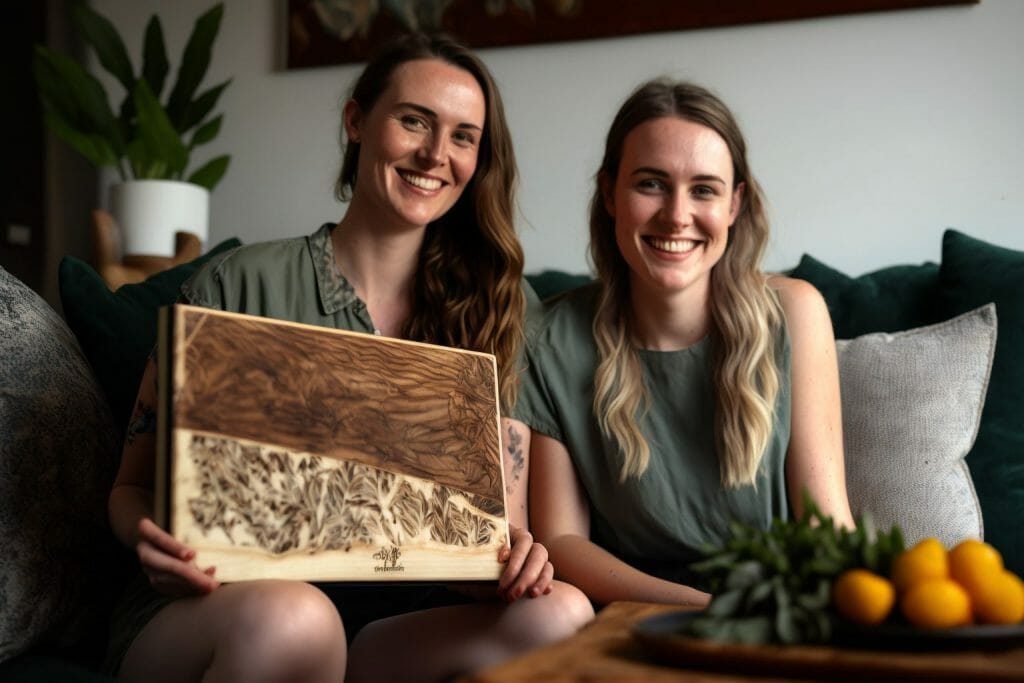
Customizing an oak charcuterie board makes for an excellent gift on any occasion. Recipients will appreciate the thoughtfulness and care that went into creating a personalized gift that's both functional and beautiful.
When gifting a personalized oak charcuterie board, consider the recipient's personal style and taste to ensure the design aligns with their preferences.
Here are a few ideas for gifting personalized oak charcuterie boards:
Wedding Gift: For a unique and memorable wedding present, engrave the couple's initials, wedding date, or a meaningful quote that symbolizes their love and commitment. A personalized charcuterie board will not only serve as a functional piece for entertaining but also as a cherished keepsake.
Housewarming Gift: Help your friends or family members settle into their new home with a personalized oak charcuterie board. Add their family name or an image of their new house for a thoughtful touch.
Anniversary Gift: Celebrate a significant milestone in a couple's life with an oak charcuterie board engraved with the number of years they've been together, along with a heartfelt message that commemorates their journey.
Host/Hostess Gift: Show your appreciation to a gracious host or hostess with a personalized oak charcuterie board. Choose a design or quote that reflects their personality and entertaining style, making it a gift they'll love using at their next gathering.
When giving a personalized oak charcuterie board as a gift, be sure to include care instructions and any necessary accessories, like cheese knives or serving utensils. This thoughtful touch will ensure the recipient can enjoy their custom charcuterie board for years to come.
Wrapping It All Up
In conclusion, oak charcuterie boards offer a stylish and functional solution for charcuterie and grazing enthusiasts. With their durability, aesthetic appeal, and versatility, oak boards are a fantastic addition to any entertaining setup. By exploring different types of oak, such as white and red oak, and learning proper care techniques, you'll ensure your board lasts for years to come.
Whether you purchase a premade board or create a custom DIY masterpiece, an oak charcuterie board is sure to impress your guests and elevate your serving game. So, embrace the beauty of oak and let it enhance your next gathering.
People Also Asked

Is Oak Good for Charcuterie Boards? Yes, oak is durable and visually appealing.
Oak's durability and aesthetic make it a great choice for charcuterie boards, adding style and functionality to your serving setup.
Can You Use Oak for a Charcuterie Board? Yes, oak is suitable for charcuterie boards.
Oak's strength and beauty make it an excellent choice for charcuterie boards, providing a reliable and attractive surface for food presentation.
How to Seal an Oak Charcuterie Board? Use food-safe mineral oil or wax.
Seal your oak charcuterie board with food-safe mineral oil or wax to protect it from moisture and maintain its longevity.
Making an Oak Charcuterie Board. Sand, cut, and finish the oak wood.
To create an oak charcuterie board, sand the wood, cut it to the desired size and shape, and apply a food-safe finish.
Coating Oak Chopping Boards. Use food-safe oil or wax.
Coat oak chopping boards with a food-safe oil or wax to protect the wood and maintain its longevity.
Oiling an Oak Chopping Board. Yes, oiling is recommended.
Oiling an oak chopping board helps preserve its durability and keeps it looking fresh and new.
Red Oak vs. White Oak for Cutting Boards. White oak is denser and more water-resistant.
White oak is generally considered better for cutting boards due to its denser structure. It also has increased resistance to water compared to red oak.

